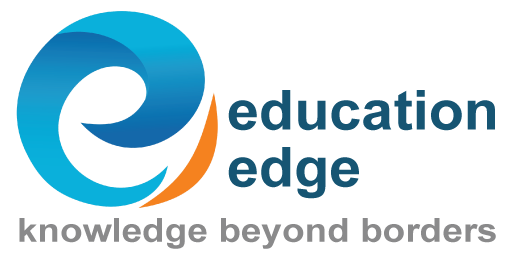Office Read 6 – Program Governance
Disclaimer – This artifact is a short summary of respective content that will be covered in class. The summary is a great tool to review content however by no means replaces the SPM V4. Standard for Program Management remains the authoritative source of preparation for the PMP Exam
Goal of this domain: IMP – Program Governance is the performance domain that enables and performs program decision making, establishes practices to support the program, and maintains program oversight
Weightage on the PgMP Exam: 14% (24 Questions)
Program Governance Performance domain has 3 components as listed below:
6.1 Program Governance Practices
6.2 Program Governance Roles
6.3 Program Governance Design and Implementation
Important concept:
1. Governance at Program level –
a. Program Governance comprises the framework, functions, and processes by which a program is monitored, managed, and supported in order to meet organizational strategic and operational goals.
b. IMP – The focus of program governance is the delivery of program benefits by establishing the systems and methods by which a program and its strategy are defined, authorized, monitored, and supported by its sponsoring organization.
2. Governance at Component level:
a. Program governance may also refer to the framework, functions, and processes by which a program team monitors and manages the components that are being performed to support the program.
b. Governance of components is often achieved through the actions of the program manager and program team responsible for the integrated outcomes of the program. Such a responsibility may also be called component governance.
Effective program governance supports the success of a program by:
· Ensuring that the goals of the program remain aligned with the strategic vision, operational capabilities, and resource commitments of the sponsoring organization.
· Approving, endorsing, and initiating the program and securing funding from the sponsoring organization;
· Establishing clear, well-understood agreements as to how the sponsoring organization will oversee the program, and conversely, the degree of autonomy that the program will be given in the pursuit of its goals;
· Providing a framework that is aligned with portfolio and corporate governance policies and processes for assessing and ensuring the program is compliant.
· IMP: Designing and authorizing the assurance process and, when required, executing reviews and health checks of the program progress in delivering its expected benefits. Various review types are used, including phase-gate reviews, other decision point reviews, and periodic health checks;
· Enabling the organization to assess the viability of the organization’s strategic plan and the level of support required to achieve it;
· Selecting, endorsing, and enabling the pursuit of program components, including projects, subsidiary programs, and other program activities; and
· Making decisions to transition between phases, terminate, or close the program.
Question: Who provides the framework, functions, and processes providing oversight, control, integration, and decision-making practices to programs, projects, and operations?
Answer: Typically Portfolio Structure but in the event that the organization does not have portfolios of programs and projects, then the process to develop the idea and steps to authorize the program should be carried out within the organizational governance framework.
6.1 PROGRAM GOVERNANCE PRACTICES
6.1.1 PROGRAM GOVERNANCE PLAN
Question: Why do we need a Governance Plan?
Answer: To facilitate the design and implementation of effective governance.
Question: What does the Program Governance Plan Contain?
Answer: Governance Plan contain governance frameworks, functions, and processes. Governance Plan can be a stand-alone document or a subsection of the program management plan. While typically there will be a program governance plan for each program in the organization, some organizations may use a single program governance plan to govern several programs.
Question: What is the purpose of the program governance plan?
Answer:
1. To describe the systems and methods to be used to monitor, manage, and support a given program, and the responsibilities of specific roles for ensuring the timely and effective use of those systems and methods.
2. This plan is referenced throughout the program’s duration to ensure the program is conforming to established governance expectations and agreements.
3. IMP: Can be updated when required but as soon as it is updated this should be communicated to the relevant stakeholders involved in program governance.
Governance Plan describes very clearly DEFINITIONS OF ROLES AND RESPONSIBILITIES, Planned Governance Meetings along with some other content. Please refer to SPM4 and review these as exam invariably tests you on the Governance Plan and its core components.
6.1.2 PROGRAM GOVERNANCE AND VISION AND GOALS
The vision and goals of the organization provide the basis for strategic mandates that drive the definition of most programs.
Question: Which component of program management ensures that any program within its area of authority defines its vision and goals in order to effectively support those of the organization?
Answer: Program governance
6.1.3 PROGRAM APPROVAL, ENDORSEMENT, AND DEFINITION
Question? Whose is responsible for approving each program’s approach and plan for how it will pursue program and organizational goals, and for authorizing the use of resources to support components and other program work in pursuit of that approach?
Answer: Program governance
Question: What artifacts are reviewed for approving Program Approach and what phase?
Answer: These approvals occur in the program definition phase and are facilitated by two program artifacts:
Program business case. Serves as a formal projection of the benefits that the program is expected to deliver and a justification for the resources that will be expended to deliver it.
Program charter. Authorizes the program management team to use organizational resources to pursue the program and links the program to its business case and the organization’s strategic priorities.
Question: Who facilitates program funding to the degree necessary to support the approved business case.
Answer: Program governance
Often, program funding is provided through a budgetary process that is controlled by a forum responsible for oversight of several programs. In these instances, program funding is provided in a manner consistent with program needs and organizational priorities, as may be defined through the organization’s portfolio management processes.
Question: What happens when program funding needs to be secured from external sources?
Answer: Program governance is typically responsible for entering into the appropriate agreements necessary to secure it. The funding may have constraints that limit its use due to law, regulations, or other limitations.
6.1.4 PROGRAM SUCCESS CRITERIA
Question: Who establishes the minimum acceptable criteria for a successful program and the methods by which those criteria will be measured, communicated, and endorsed?
Answer: Program Governance
Question: What does the minimum acceptable criteria established by Program Governance describe?
Answer: The definition of success consistent with the expectations and needs of key program stakeholders, and reinforce the program alignment to deliver the maximum attainable benefits.
6.1.5 PROGRAM MONITORING, REPORTING, AND CONTROLLING
The program governance participants are uniquely positioned to monitor the progress of programs in their pursuit of organizational goals, working collaboratively with the program manager to maximize the opportunities for success for the program.
Program governance assumes responsibility for enforcing program compliance with such processes.
IMP:Carefully review the SPM4 for what does Governance Reporting and Controlling Processes entail.
6.1.6 PROGRAM RISK AND ISSUE GOVERNANCE
Effective risk and issue management practices ensure that key risks and issues are escalated appropriately and resolved in a timely manner. The escalation processes typically operate at two levels: (a)within the program, between component teams, the program management team, and the program steering committee; and (b)outside the program, between the program management team, the program’s steering committee, and other stakeholders.
IMP:
Question: What does Program Governance use to establish risk threshhold?
Answer: Based on the risk appetite of the organization
6.1.7 PROGRAM QUALITY GOVERNANCE
The governance of quality is essential to the success of the program. Quality management planning is often performed at the component level and is therefore governed at that level. The governance participants are responsible for reviewing and approving the approach to quality management and the standards by which quality will be measured.
6.1.8 PROGRAM CHANGE GOVERNANCE
Program governance plays a critical role in the authorization of changes to the program. The program steering committee is responsible for defining the types of changes that a program manager would be independently authorized to approve and those changes that would be significant enough to require further discussion prior to approval.
The program manager assesses whether the risks associated with potential changes are acceptable or desirable, whether the proposed changes are operationally feasible and organizationally supportable, and whether the changes are significant enough to require approval of the program steering committee
Imp: The extent to which a change can be authorized by program governance is bounded by the program business case and organizational strategy.
6.1.9 PROGRAM GOVERNANCE REVIEWS
Program governance endorses reviews of programs at key decision points in the program life cycle.
Very IMP: These reviews often are conducted at times that coincide with the initiation or completion of significant segments of a program to enable governance to approve or disapprove the passage of a program from one significant segment to another. They also facilitate the review and approval of any required changes to the program at key decision points.
Question: What are Phase Gate Reviews?
Answer: Phase-gate reviews are reviews at the end of a phase in which a decision is made to continue to the next phase, to continue with modification, or to end a program or program component. These enable governance to approve or disapprove the passage of a program from one significant phase to another.
Question: What is the primary purpose of phase gate review?
Answer: Strategic alignment of the program and its components with the intended goals of both the program and the organization;
6.1.10 PROGRAM PERIODIC HEALTH CHECKS
Question: When do we need Program periodic health checks,
Answer: Generally held between decision-point reviews, assess a program’s ongoing performance and progress toward the realization and sustainment of benefits.
IMP: The importance and use of these reviews increase when there is an extended period between scheduled decision-point reviews.
Question: What artifact specifies governance requirements for the scheduling, the content, the participants, and the assessments (or metrics) to be used during such health checks?
Answer: The Governance Plan
6.1.11 PROGRAM COMPONENT INITIATION AND TRANSITION
Whose approval is usually required prior to the initiation of individual components of the program?
Answer: Program Steering Committee or Governance Board
The program manager frequently acts as the proposer when seeking authorization for the initiation of these components. The approval of the initiation of a new program component generally includes:
What artifact should be created for initiating a component
Answer: Developing, modifying, or reconfirming the business case
IMP: Component Closure: Approval is generally required for transition and closure of an individual program component. The review of any recommendation for the transition or closure of a program component generally includes:
Confirming that the business case for the component has been sufficiently satisfied or that further pursuit of the component’s goals should be discontinued,
6.1.12 PROGRAM CLOSURE
· The program steering committee reviews and makes decisions on recommendations for the closure of programs. It assesses whether conditions warranting the program are satisfied, and that recommendations for closure of a program are consistent with the current organizational vision, mission, and strategy.
· Alternatively, programs may be terminated because changes in the organizational strategy or environment have resulted in diminished program benefits or needs.
6.2 PROGRAM GOVERNANCE ROLES
1. Establishing an appropriate collaborative relationship between individuals responsible for program governance and program management is critical to the success of programs in delivering the benefits desired by the organization.
2. Program managers rely on the program steering committee (also referred to as the program governance board, oversight committee, or board of directors) members to establish organizational conditions that enable the effective pursuit of programs and to resolve issues that inevitably arise when the needs of their program conflict with the needs of other programs, projects, or ongoing operational activities.
What are the different roles in Program Governance?
IMP: Knowing the below roles is critical from exam standpoint. Below are short summaries, SPM4 discusses in detail all the roles below and must be reviewed thoroughly as quite a few questions have been asked around this content.
· Program sponsor.An individual or a group that provides resources and support for the program and isaccountable for enabling success.
· Program steering committee.A group of participants representing various program-related interests with the purpose of supporting the program under its authority by providing guidance, endorsements, and approvals through the governance practices. Members are typically executives from organizational groups that support the program’s components and operations.
· Program management office (PMO).A management structure that standardizes the program-related governance processes and facilitates the sharing of resources, methodologies, tools, and techniques.
· Program manager.The individual within an agency, organization, or corporation who maintains responsibility forthe leadership, conduct, and performance of a program. In the context of governance, this role interfaces with the program steering committee and sponsor and manages the program to ensure delivery of the intended benefits.
· Project manager.The person assigned by the performing organization to lead the team that is responsible forachieving project objectives. In the context of governance, this role interfaces with the program manager and program sponsor and manages the delivery of the project’s product, service, or result.
· Other stakeholders.These stakeholders include the manager of the portfolio of which the program is acomponent and operational managers receiving the capabilities delivered by the program.
6.3 PROGRAM GOVERNANCE DESIGN AND IMPLEMENTATION
1. Effective governance ensures that strategic alignment is optimized and that the program’s targeted benefits are delivered as expected.
2. Governance practices provide the foundation for ensuring that decisions are made rationally and with appropriate justification, and that the responsibilities and accountabilities are clearly defined and applied.
IMP: Inappropriate governance may create more problems than its absence as it can engender a false sense of alignment, progress, and success.
Following factors must be considered when optimizing and tailoring program governance:
Legislative environment. Programs that are significantly influenced by changing legislation may benefit from governance designed for direct interaction with the legislative authorities.
Decision-making hierarchy. It is critical for decision-making responsibility to be at the level where competence,accountability, and authority reside. There are complexities to this approach.
Imp: A highly regarded, successful, and experienced program manager and team may be given greater autonomy and decision-making powers than is typically given to program managers.
Alignment with portfolio and organizational governance.Program governance is impacted by the portfolio governance that it supports. The degree to which program governance should align with organizational governance is based on the number, type, and relative importance of the program governance’s interactions with corporate groups and governance.
Program delivery. A program that regularly delivers benefits to the organization is likely to require different governance than a program delivering all or most of the benefits at the end.
Contracting. A program being managed and staffed by employees of the receiving organization is likely to require a different level of governance than a program being delivered by an external party when, in such cases, the management of the legal agreement requires a different governance focus.
Risk of failure. The greater the perceived risk of program failure, the greater the likelihood the governance team will monitor progress and success more diligently. This may manifest in a higher frequency of health checks and less decision-making delegation to the program team
Strategic importance. High-value programs critical to the success of the organization and delivering benefits that need to be completely aligned with the strategy may require different or more senior participants on the governance team.
Program management office (PMO). In many project- or program-based organizations, a centralized PMO supports the governance of all programs for that organization. In other organizations, PMOs may be formed specifically for a given program.
Program funding structure. When funding is secured from outside the delivery organization, for example from the World Bank, there are likely implications on the design of the governance and the skills required.
In addition to these factors, the phase of the life cycle also influences program governance, because the relative importance of different governance practices differs as the program progresses. The corresponding design of the governance should align with required practices in a timely manner.







